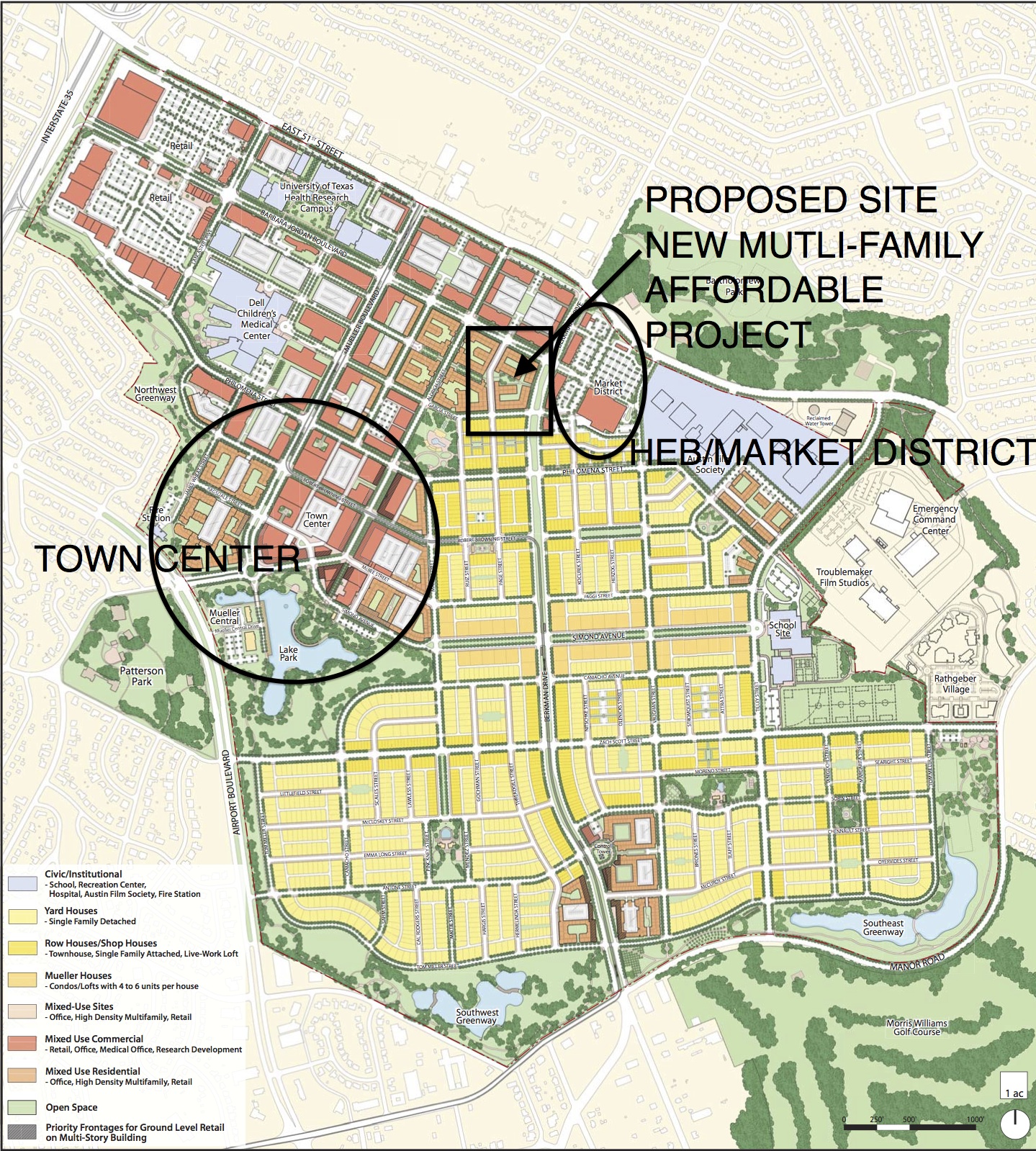
Mueller Central Austin was to be a paradigm of sensible urban development by defying conventional land consumption practices and automobile-dependent residency. Its objectives were to create economic development that would support the project’s infrastructure and grow the city’s tax base with employment opportunities, supporting compatibility with adjoining neighborhoods, providing a wide selection of housing options and natural resource sustainability.
The community’s master plan incorporates a Master Plan with guidelines for building design, transit, infrastructure and private/public opens spaces. The Town Center of Mueller is a dynamic mixed-use district with commercial office property, high density residencies and ground-level setting of retail including a grocery, dining and entertainment uses, all within walking proximity to surrounding neighborhoods. Approximately 120 acres is designated for employment with the idea of promoting a community where residents both live and work. Infrastructure adheres to sustainability principles; utilities are engineered to reduce resource consumption, the community’s green space (comprising approximately 140 acres) lessens “heat island” impact and drainage reduces downstream flooding and filters toxins before release.
Mueller’s four neighborhoods, envisioned to be home to 10,000 residents, accommodate various demographics from students to families to senior citizens and all contain parks. There are six residency types with a range of lot sizes: Yard Houses, Row Houses, Garden Court Houses, Live/Work Shop Houses, Multiplexes and Apartment Houses. A neighborhood school, athletic fields and a community recreation center serve the community. Greenways on the perimeter of Mueller connect to Patterson and Bartholomew Parks and Morris Williams Golf Course.
Already there is a major business presence at Mueller including the administrative headquarters for Seton Hospital, Frost Bank and the Dell Children’s Medical Center.
Mueller Central embodies the principles of New Urbanism by reducing traffic and eliminating sprawl. Analogous to 19th century European villages or early 20th century American small towns, Mueller combines commerce and residency into a tight knit community built for the future.
